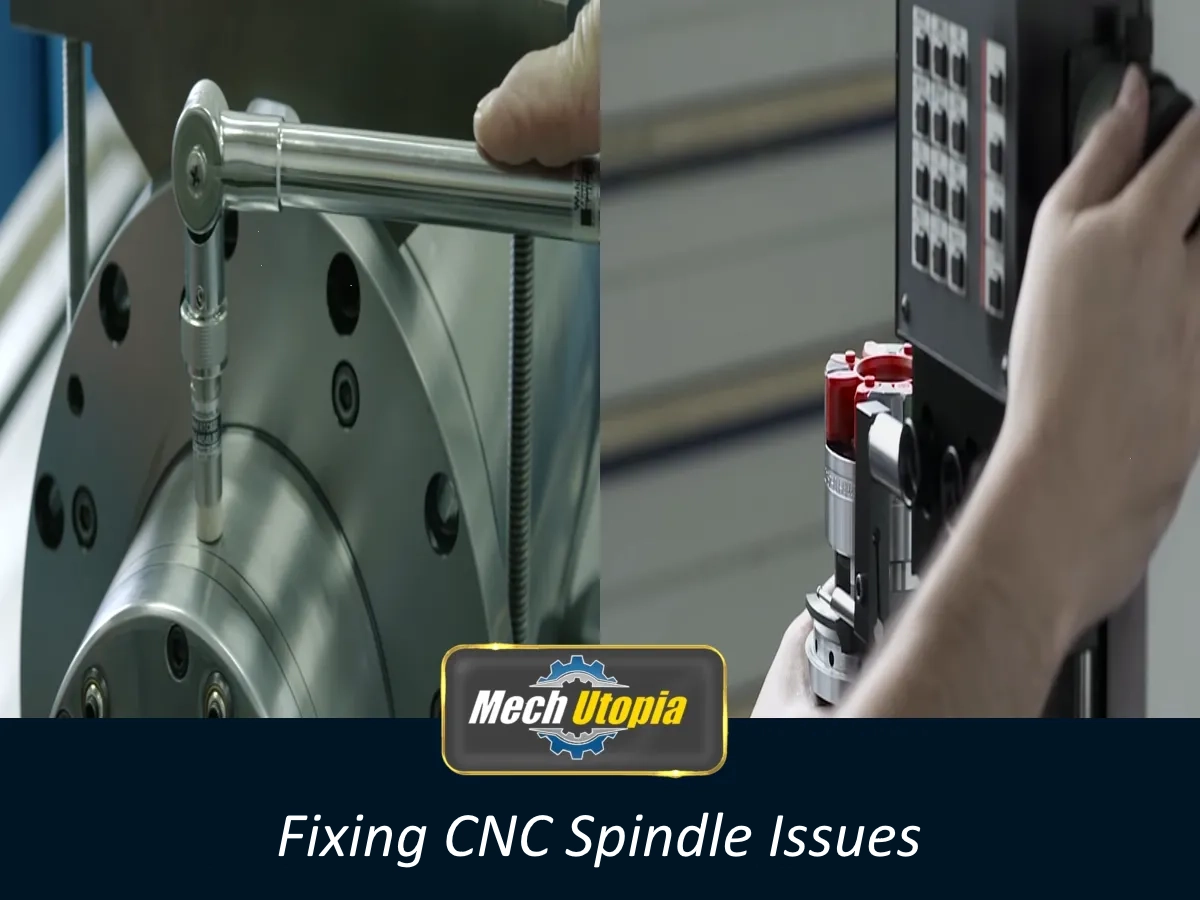
For anyone who uses CNC machinery, understanding the intricacies of the spindle is essential for maintaining optimal performance and troubleshooting problems. The CNC spindle, consisting of components such as the shaft, bearings, and drawbar, plays a critical role in the functioning of the CNC machine. Grasping its functionality can vastly aid in diagnosing various issues that could arise within your machine. Furthermore, there are tell-tale signs already in existence that can alert operators to an impending spindle problem— signs like overheating, unusual noises, or unanticipated vibrations. As such, an understanding of these symptoms will enable you to identify spindle issues before they escalate into major, costly repairs.
Key Takeaways are:
- Understanding the CNC Spindle: The CNC spindle is the rotating axis of the machine that does the main job of cutting or grinding the workpiece materials. It consists of several key components including the shaft, bearings, motor, housing, drawbar, tool interface, sensors, and coolant system.
- Identifying Spindle Problems: Issues with the spindle can lead to excessive vibration, premature mechanical wear, impeded accuracy, and inferior surface quality. Problems can arise from an unbalanced spindle, failures in the lubrication system, irregular power supply, unoptimized drive chain, and a defective pulley system.
- Spindle Repair and Maintenance: Regular checks and maintenance can help identify and address issues related to wear and tear, misalignment, thermal deformation, inconsistent power supply, and failures in the lubrication system. Implementing a regular maintenance schedule and employing advanced technology solutions can enhance the overall performance of the spindle.
- Preventative Measures: Establishing a routine preventative maintenance schedule is essential in avoiding future issues and ensuring the longevity of the machine. This involves a regular review of the systems working alongside spindles, including the power transmission mechanism, coolant system, lubrication system, and the drive chain.
- Effective usage of new technologies: Today with AI technologies spindle vibrations can be checked and problems can be found before occurring in real time.
Understanding the CNC Spindle
The Integral Components of a CNC Spindle and Their Operational Functions
Unveiling the marvel that is Computer Numerical Control (CNC) technology, allows insight into its intricacies and the impact it has made on today’s manufacturing industry. The CNC technology revolutionized the world by replacing conventional machines with automated versions that save time, energy, and materials. At the heart of any CNC machine lies an essential piece: the CNC Spindle. This article will dissect the fundamental components of a CNC spindle and elucidate their functionalities.
| Problem | Solution |
|---|---|
| Excessive Vibration | Regular spindle balancing to maintain equilibrium and support smooth operations. |
| Premature Mechanical Wear | Regular checks and maintenance to identify and address wear and tear. |
| Impeded Accuracy | Ensure precision alignment of the spindle using technologies like laser alignment tools. |
| Inferior Surface Quality | Regular checks and maintenance of the drive chain interaction and pulley system. |
| Failures in Lubrication System | Regular system checks and proper lubricant choice to mitigate friction and heat generation. |
| Irregular Power Supply | Regular monitoring of voltage levels to ensure the spindle operates within designated specifications. |
| Unoptimized Drive Chain | Ensure smooth operations by maintaining seamless interaction between the spindle, motor, and drive. |
| Defective Pulley System | Regular checks and maintenance of the pulley system to prevent speed variations and undue stress on other components. |
A CNC spindle, in layman’s terms, is the rotating axis of the machine that does the main job of cutting or grinding the workpiece materials. It’s a complex, modular unit that houses several key components, each carrying out its indispensable function for effective operation.
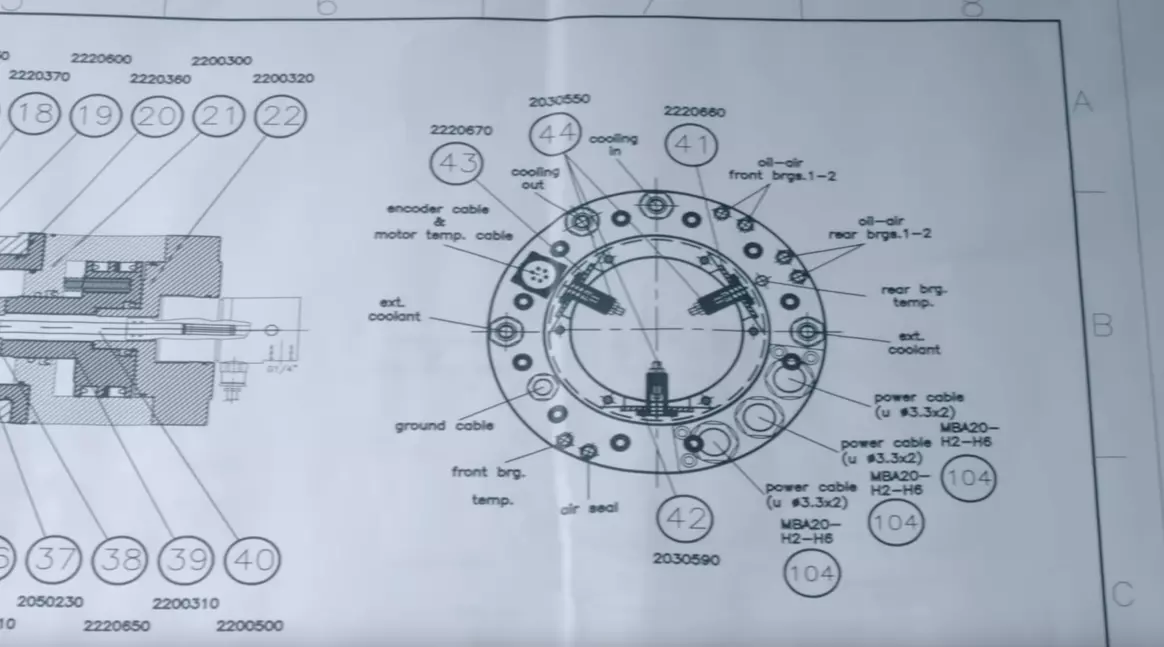
The core components of a CNC spindle include:
- Shaft: The shaft is the primary and central part of the spindle. It holds and rotates the cutting tools attached to it. Its rotation speed and accuracy significantly impact the efficiency of the machining process.
- Bearings: These are the lifeline of the spindle, enabling the shaft to rotate freely with less friction. They play a critical role in maintaining the precision and accuracy of the CNC machine.
- Motor: Attached to the spindle assembly, the motor causes it to rotate. CNC machines can utilize either a spindle motor that’s a stand-alone electric motor (belt-driven) or an integrated motor spindles (direct-drive).
- Housing: This component keeps all the internal parts intact and aligns them precisely. Typically made from cast iron or fabricated steel, it dampens any vibrations and helps dissipate heat generated during the machine operations.
- Drawbar: It locks the cutting tool in place onto the spindle. This component is critical for safety purposes – it ensures that the cutting tool does not accidentally dislocate during the operating process.
- Tool Interface: This component holds the cutting tool. Its design varies based on the type of job or application – milling, drilling, or grinding.
- Sensors: Installed to monitor the conditions of the spindle, providing valuable real-time information like temperature, vibration, and speed. Sensor data helps prevent damage, optimize performance, and schedule maintenance effectively.
- Coolant system: Heat build-up is common during high-speed operations, potentially damaging the spindle. The coolant system keeps the spindle, tools, and workpieces cool, enhancing the lifespan of tools and equipment.
Understanding the primary components of a CNC spindle is the first stride towards leveraging the marvel of CNC technology effectively. The spindle is undeniably a valuable asset in the machinery sector, owing to the precision and speed it provides in material processing tasks. As automation continues to reshape industries, the importance of a high-functioning, fully operational CNC spindle remains unchallenged in the foreseeable future.
Identifying Spindle Problems
Identifying Issues in CNC Spindles: Beyond the Basics
In the fascinating world of manufacturing, CNC machining takes the crown as a cutting-edge, versatile technology. It’s where precision meets efficiency and innovation. However, operation hiccups can sometimes occur, and these mainly lie within the heart of the machine, the CNC spindle. We’ve previously delved into key components like the shaft, bearings, motor, housing, drawbar, tool interface, sensors, and coolant system. Now let’s uncover additional crucial elements that could hinder your spindle’s optimal performance.
A critical part to scrutinize in the grand scheme of CNC machining is the spindle’s balance. Unbalanced spindles can cause excessive vibration, leading to premature mechanical wear, impeded accuracy, and inferior surface quality. Regular spindle balancing aids in maintaining the fine equilibrium, supporting smooth and efficient machining operations.
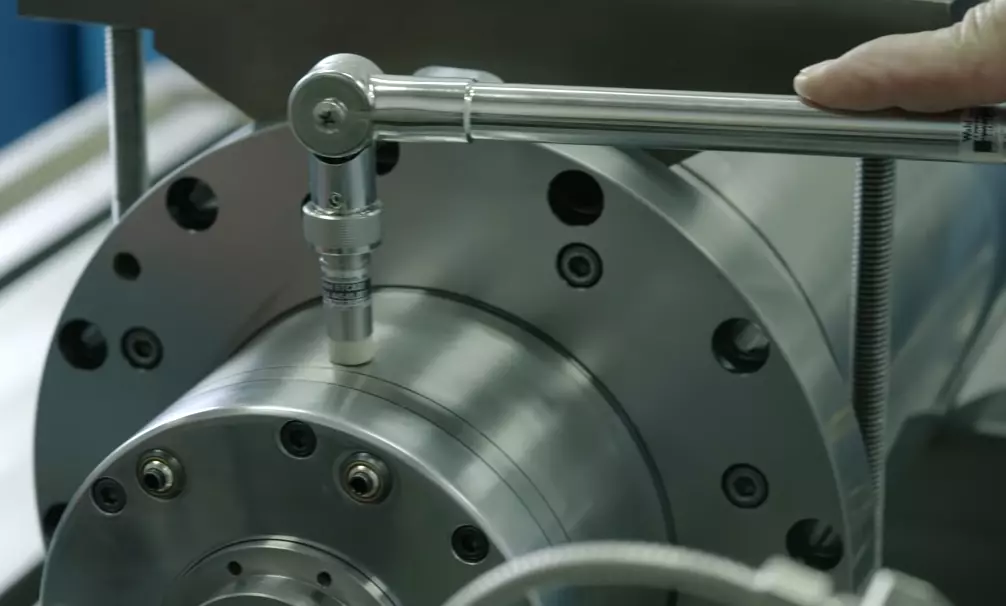
Failures in lubrication system rank next in the list. These systems mitigate the friction among critical moving parts, hampering heat generation and part wear. Signs of lubrication issues include overheated spindles, excessive noise, and diminished performance. Regular system checks and proper lubricant choice can go a long way in mitigating these problems.
The power supply to your spindle can also be a source of trouble and should not be overlooked. Sudden power surges, regular fluctuations, or low power can result in uneven performance, premature wear, and even total failure. Make it a point to regularly monitor voltage levels to ensure the spindle operates within designated specifications.
An unoptimized drive chain might also contribute to spindle problems. To ensure smooth operations, it’s essential that the spindle, motor, and drive interact seamlessly. Any discordance can result in irregular motions and reduced throughput—something that’s officially off the love-list for us tech enthusiasts! Regular maintenance companionship with your CNC machine can help identify these issues in the early stages.
Lastly, don’t forget the swindle pulley system. A defective pulley can reduce the CNC machine’s output by causing speed variations, adding undue stress on other components.
Adjusting and maintaining the balance, lubrication system, power supply, drive chain interaction, and pulley system can help keep CNC spindle problems at bay. Equipment longevity and optimized productivity—a win-win in the manufacturing world—lie right there, where vigilance meets proper maintenance. Manafort the love for technology, let’s continue to ride the wave of innovation, fostering efficiency and precision.
Spindle Repair and Maintenance
Maintaining the Spindle’s Optimal Performance: Key Strategies and Techniques
In the dynamic world of Computer Numerical Control (CNC) machining, the spindle endows the machine with the operational precision needed for high-quality output. Armed with the knowledge of how to address common issues like spindle balance, lubrication failures and power supply troubles can lead to not just optimal performance, but prolonged and productive spindle lifespan. Enhancement of the spindle’s performance revolves around multiple areas that go beyond the shaft, bearings, motor, housing, drawbar and tool interface. This includes the coolant system and sensors.
Delving into the core challenge – how to repair common spindle issues and maintain optimal spindle performance – it necessitates a systematic approach, anchored firmly in thorough understanding and innovative problem-solving. The strategy can be broadly divided into addressing internal issues and external factors.
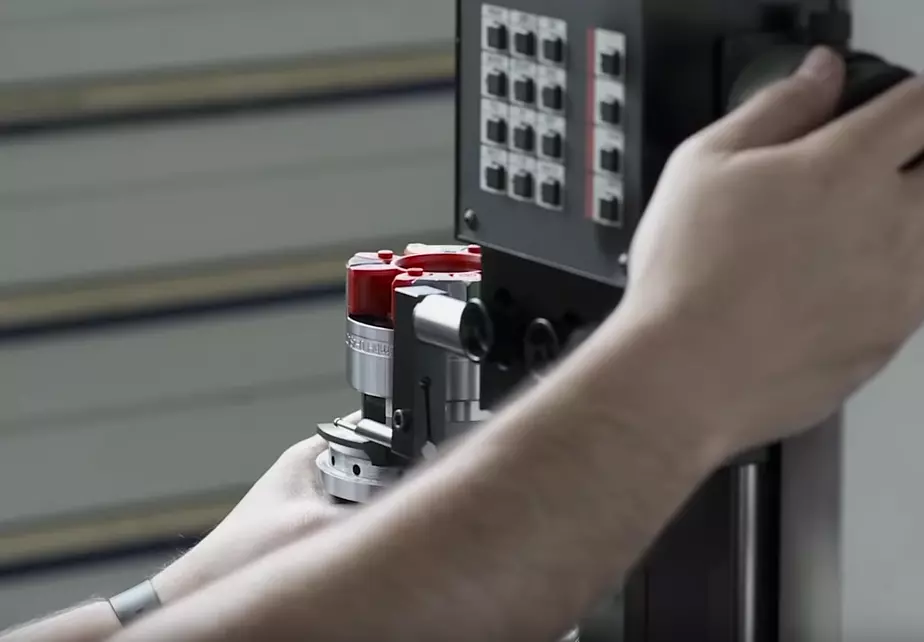
- Tackling Internal Spindle Issues: The spindle’s internal elements, including gears, taper, and shaft set, play a pivotal role in ensuring optimal operations. Regular checks help in identifying and addressing issues related to wear and tear, which could otherwise lead to decreased output or unexpected machine downtimes. Additionally, attentiveness to subtle changes like unusual noises, heat generation, or vibration can help in early detection of potential problems.
- Ensuring Precision Alignment: The alignment of the spindle is a crucial determinant of its efficiency. Misalignment can lead to decreased accuracy, increased wear, and a resultant decrease in machine lifespan. Periodic checks using technologies like laser alignment tools assist in maintaining the perfect alignment.
- Mitigating Thermal Deformation: CNC machining operations generate significant amounts of heat which can cause thermal deformation in spindle components. The combination of spindle designs that cater to effective heat dissipation, together with certain tech-integrated solutions like temperature sensors, helps to safeguard against such issues.
- Fostering Power Supply Consistency: Inconsistent power supply can lead to unwanted spindle stoppages, jarring motions and thereby discrepancies in output. Ensuring a stabilized power supply is therefore necessary to promote smooth and failure-free operations.
- Implementing Regular Maintenance: As the old adage goes, prevention is better than cure. Scheduled maintenance programs should be implemented to ensure that the spindle remains in optimal working condition. This involves a regular review of the systems working alongside spindles, including the power transmission mechanism, coolant system, lubrication system, and the drive chain.
- Promoting Lubrication System Efficiency: An efficient lubrication system is pivotal as it minimizes friction, heat generation and wear. Nevertheless, failures in the lubrication system can lead to catastrophic spindle failures. Employing technologically advanced sensors can help in monitoring the lubrication system and thereby detecting issues early.
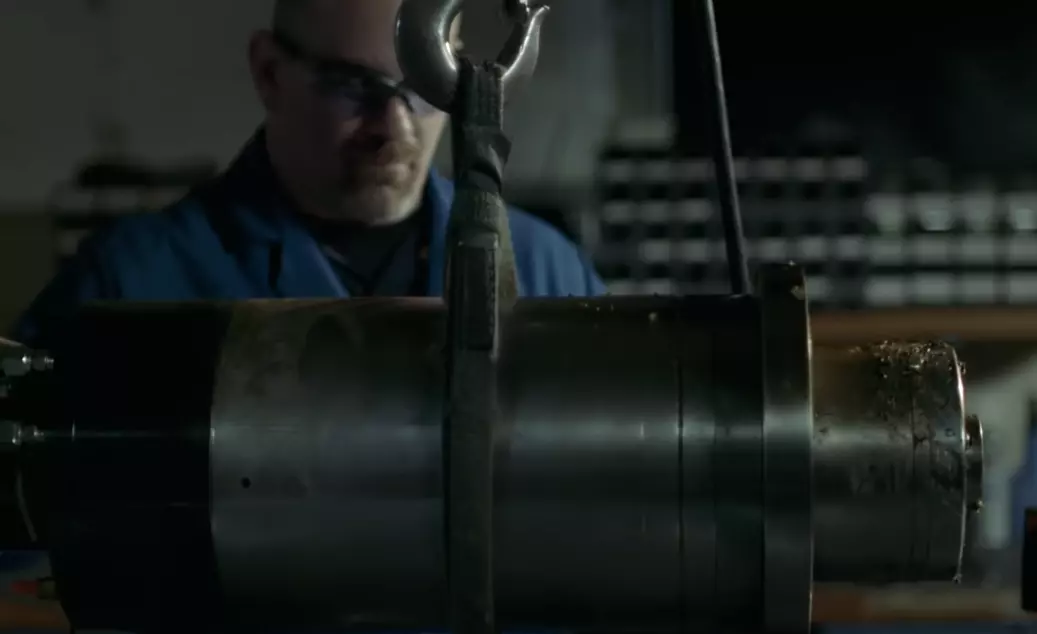
In conclusion, through a strategic approach that addresses these diverse areas, it is possible to not just manage common spindle issues but also enhance the overall performance of the spindle. Investing in advanced technology solutions, fostering a maintenance-oriented approach and prioritizing continual learning can prove to be beneficial in maintaining and improving the performance for CNC operators. The balance between manual human intervention and automated tech solutions intertwined with analytical and technical assistance helps in keeping the spindle system at its peak. It’s imperative to stay proactive, make smart choices and employ cutting-edge solutions – after all, in the fast-paced world of tech and CNC machining, staying ahead makes all the difference.
Understanding the CNC spindle’s problems doesn’t just end at diagnosing them; it extends to the capacity to repair these issues and manage their regular maintenance. Having grasped how to replace faulty parts and adjust alignments allows you to take action when your spindle encounters problems. Moreover, establishing a routine preventative maintenance schedule is essential in avoiding future issues and ensuring the longevity of your machine. In essence, being well versed in your CNC spindle doesn’t just result in cost savings, it allows for smooth and uninterrupted machining operations, underpinning your overall productivity and output.

